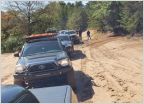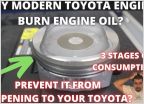-
Welcome to Tacoma World!
You are currently viewing as a guest! To get full-access, you need to register for a FREE account.
As a registered member, you’ll be able to:- Participate in all Tacoma discussion topics
- Communicate privately with other Tacoma owners from around the world
- Post your own photos in our Members Gallery
- Access all special features of the site
New 5100s
Discussion in '3rd Gen. Tacomas (2016-2023)' started by johnnytwotimes, Apr 27, 2023.
Page 3 of 3
Page 3 of 3


 22' USB-C port not charging new phone
22' USB-C port not charging new phone Tonneau cover help!
Tonneau cover help! Beat sonic Apple Carplay vs aftermarket radio
Beat sonic Apple Carplay vs aftermarket radio Anyone using other than 0W-20 oil?
Anyone using other than 0W-20 oil? Decal removal
Decal removal Do the headlights perform on 2017s?
Do the headlights perform on 2017s?











































































